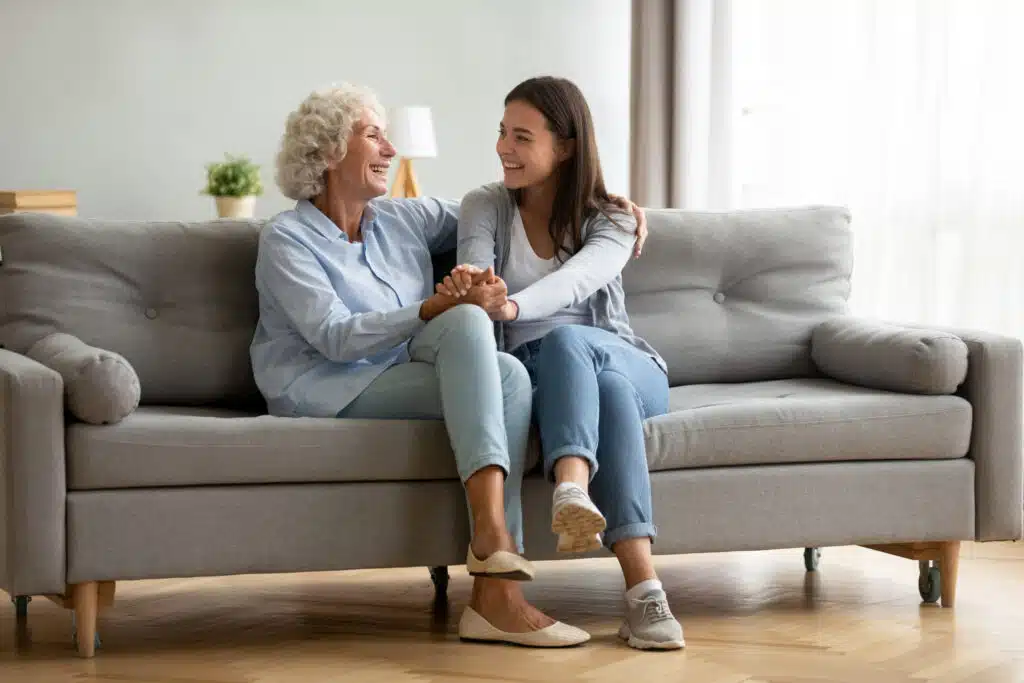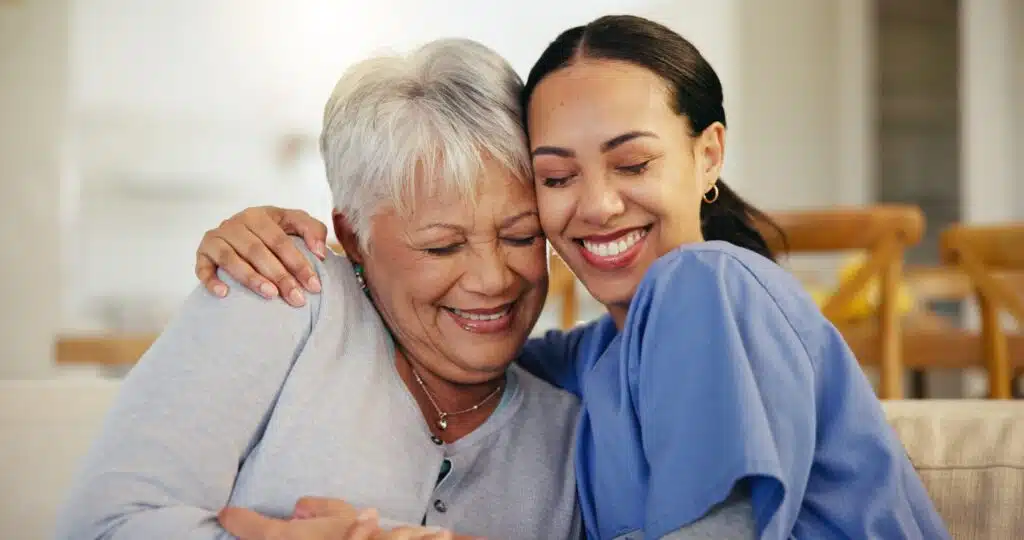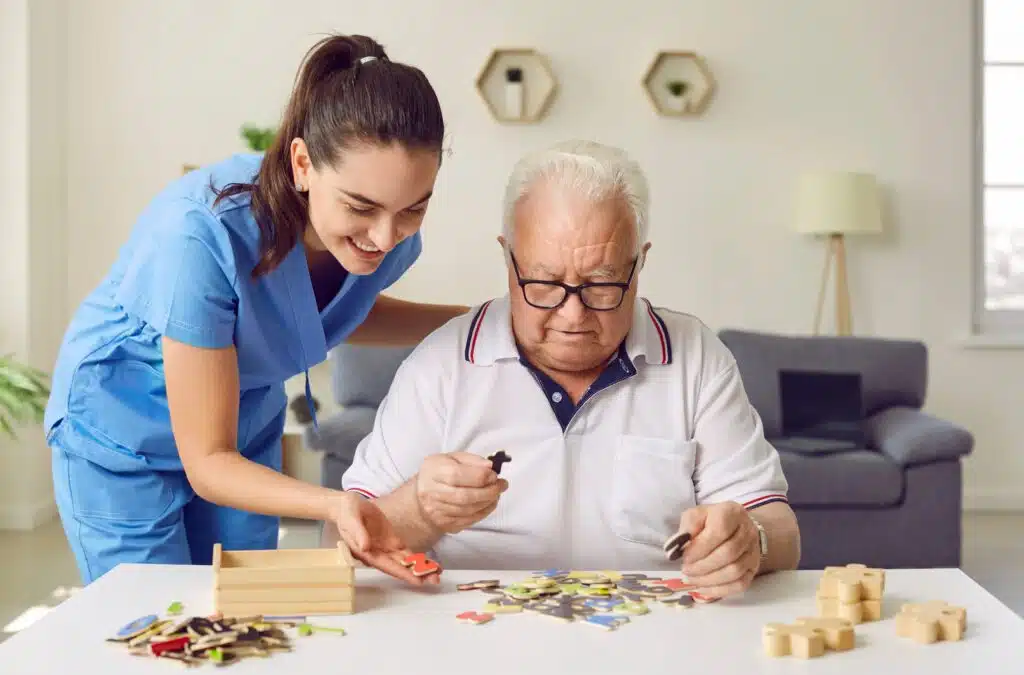
When loved ones grow older, relatives weigh pivotal choices regarding support styles that safeguard dignity, freedom, and happiness. Two common paths—full-time home care and residential facilities—deliver contrasting experiences, and recognizing their nuances matters. Facilities supply shared amenities under fixed timetables, whereas home care keeps elders in familiar spaces with continuous, tailor-made assistance.
This article outlines the major advantages of live-in care, illustrating why remaining at home can outshine institutional living for many households.
Quick Side-by-Side
| Feature | Live-in Care | Retirement Homes |
|
Living Environment |
Comfort of long-time residence |
Shared, unfamiliar setting |
|
Caregiver Attention |
Dedicated one-to-one support |
Staff divided among many residents |
|
Daily Routine |
Fully flexible, senior-led |
Organized by facility clock |
|
Social Interaction |
Custom companionship plus local outings |
Group events in communal areas |
|
Cost |
Often cheaper, notably for partners |
Set fees, extras possible |
|
Independence |
Maximum personal freedom |
Some autonomy given up |
|
Adaptability of Care |
Plans shift with changing needs |
Little room for customization |
Understanding the Options
Live-In Care Defined
Live-in care supplies a bespoke arrangement where a caregiver lives in the elder’s house, delivering individualized help twenty-four hours a day. Professionals aid with vital tasks such as:
-
Bathing and grooming
-
Menu planning and cooking
-
Safe movement around the home
-
Meaningful conversation and company
The appeal of live-in care lies in its focus on individualized attention. Unlike care settings that require seniors to conform to pre-set schedules, live-in care adapts to the person’s unique needs and preferences.
For example, a caregiver might:
-
Whip up the elder’s preferred pancakes at dawn
-
Hand over prescriptions at precise hours
-
Stroll beside them through the backyard roses
In addition to physical care, live-in caregivers provide emotional support, fostering a relationship based on trust and companionship. This level of connection is especially valuable for seniors who might otherwise feel isolated.
Live-in care is ideal when families need to:
-
Secure individualized, one-to-one assistance that flexes with personal habits and medical demands.
-
Keep the warmth and familiarity of home while gaining professional oversight.
-
Protect self-direction and personal choice by letting the elder control the day’s flow.
-
Boost emotional health through steady companionship and a trusted caregiver bond.
-
Modify service intensity over time, adding or reducing help as conditions evolve.
Retirement Homes Defined
Retirement homes, on the other hand, offer a communal living experience designed for seniors who need some assistance but wish to remain socially active. These facilities typically include:
-
Private or semi-private rooms
-
Group dining, planned recreation
-
Different tiers of on-site clinical aid
While this environment can be beneficial for those who enjoy group activities and social engagement, it often requires significant adjustments. Seniors must leave their familiar surroundings and adapt to:
-
Unfamiliar timetables
-
Common lounges and hallways
-
New caregivers and housemates each day.
For individuals who value privacy, independence, or the comfort of their home, this transition can feel overwhelming.
Retirement homes may be a better fit when families need to:
-
Guarantee organized group recreation within a built-in social circle.
-
Deliver care in a pooled setting where nurses are steps away.
-
Suit seniors who favor regimented days over spontaneous home life.
-
Off-load household chores, as cooking, cleaning, and events are handled.
Key Benefits of Staying Home with Live-In Care

Comfort and Familiarity
Home represents far more than walls—it anchors emotional safety. Staying among beloved memories, favorite chairs, and steady evening rituals can lift an elder’s spirit dramatically. This benefit grows for those with memory loss, such as dementia, because recognizable rooms lessen agitation.
Picture a grandfather who, for forty years, has brewed tea in the same kitchen and watches the noon news in his recliner. These steady habits create calm no new place can copy.
Aging in place also keeps neighbors, the corner grocer, and the local church within reach, sustaining friendships that nurture happiness.
Live-in care provides comfort and familiarity by:
-
Cutting worry and restlessness by keeping surroundings unchanged.
-
Safeguarding beloved customs, from morning crossword to evening prayers.
-
Helping brain health for those with memory issues through consistent cues.
-
Encouraging nearby connections with longtime friends and local clubs.
-
Preventing relocation shock, sparing emotions and physical strain.
Personalized Care

The biggest difference lies in bespoke service. Live-in helpers learn personal tastes, hobbies, and medical details, then shape each shift around them.
A caregiver might bake low-sodium banana bread exactly how grandma likes it, or schedule puzzle time after lunch because that brightens her afternoon. Such focus is impossible when one aide watches twenty rooms.
Plans also evolve: after a fall, hours can expand; after rehab, they can scale back—no waiting for facility approval.
Live-in care ensures personalized attention by:
-
Building plans around medical, emotional, and lifestyle needs.
-
Letting families scale hours as health conditions change.
-
Honouring food likes and diet limits so meals stay tasty and safe.
-
Keeping hobbies alive—knitting, guitar, tomato growing—without institutional barriers.
-
Delivering undivided attention, deepening trust and understanding.
Independence and Autonomy
Remaining the boss of one’s own calendar is a core advantage. Facilities often dictate wake-up calls, meal seatings, and activity slots. At home, the elder decides when to rise, what to eat, and how to spend the afternoon.
With caregiver support, she can still shop for groceries, attend church, or host book club, keeping dignity and self-worth intact.
Live-in care promotes independence and autonomy by:
-
Letting elders set waking, dining, and outing times.
-
Offering help without imposing rules.
-
Supporting visits with friends and rides to favourite places.
-
Encouraging pastimes from painting to woodworking.
-
Keeping spouses together, eliminating forced separation.
Cost Comparisons
Although sticker prices can seem high, home care often undercuts facility fees, particularly for partners. One caregiver covering two people in a paid-off house avoids double room charges and facility meal plans.
Families also skip moving costs, community entrance deposits, and new-furniture purchases. Service hours can be adjusted to match budgets—full-time at first, part-time after recovery.
Live-in care offers cost-effective solutions by:
-
Skipping facility buy-in fees and downsizing headaches.
-
Covering both members of a couple under one daily rate.
-
Allowing families to pick hours that fit financial comfort.
-
Avoiding surprise surcharges for extra meds or laundry.
-
Preserving property value and long-term savings.
Challenges in Retirement Homes
Facilities supply structure and events, yet several drawbacks can dampen the experience.
Loss of Personal Space
Moving often forces downsizing and shared dining or washrooms. Many elders miss quiet nooks, private kitchens, or gardens they tended for decades.
Limited Individual Attention
With high resident-to-staff ratios, personalized moments shrink. Aides may rush medication passes or skip small talk, leaving some feeling invisible.
Adjusting to New Environments
Leaving lifelong neighbours and routines can trigger grief, anxiety, or withdrawal, especially for those with cognitive decline who rely on familiar cues.
Additional Advantages of Live-In Care

Caregiver Compatibility
Agencies like Assurance pair helpers and elders who share hobbies—gardening, jazz, baseball—sparking real friendships that enrich daily life.
Flexible Care Plans
Hours can ramp up after surgery, drop to nights only when strength returns, or shift to dementia support as cognition changes—no lease to break or waiting lists.
Socialization at Home
Caregivers drive elders to bingo, set up video calls with grandkids, or walk to the corner café, preventing isolation without institutional noise.
Specialized Care for Chronic Conditions
Professionals track blood sugar, supervise Parkinson’s meds, or guard against falls, supplying hospital-level vigilance without leaving home.
Dispelling Myths About Live-In Care
Despite its benefits, misconceptions about live-in care often deter families from considering this option. Let’s address some common myths:
“Live-in care is unaffordable.”
Total household bills often land below facility invoices, especially when couples are involved.
“Caregivers lack training.”
Certified staff receive ongoing instruction in first aid, dementia, and emergency response.
“Seniors will feel lonely at home.”
Planned outings, family visits, and caregiver camaraderie keep social calendars full.
“Live-in care is only for those with severe health issues.”
Many clients simply want meal prep, light housekeeping, and someone nearby overnight—preventative support that maintains vitality.
“Families will lose control over their loved one’s care.”
Relatives set goals, review schedules, and meet caregivers regularly, staying in charge.
“Home care isn’t as safe as a retirement home.”
One-to-one supervision lowers fall risk, ensures correct meds, and offers instant emergency aid—often surpassing communal safety stats.
Why Aging in Place Aligns with Seniors’ Wishes
Nine out of ten elders voice the desire to remain home. Familiar bedrooms, photo-lined hallways, and garden roses root identity and contentment.
Supporting that wish grants families peace and elders fulfillment.
The Heart of Home
Live-in care blends practical support with genuine companionship, letting seniors stay safe, independent, and cozy where memories live.
For families exploring top-tier options, home care delivers unmatched value.
Curious if live-in care suits your loved one? Reach our team for a chat today.
About The Author
Stephen Bleeker
Stephen Bleeker champions a new standard of senior support as founder and CEO of Assurance Home Care. His mission centers on helping clients age gracefully at home through kind, customized service. Drawing on diverse experience in music, lifestyle, and entertainment, he injects creativity and strategic vision into healthcare delivery. Focused on innovation, client satisfaction, and holistic marketing, Stephen leads a dynamic team reshaping how care feels—human, empowering, and rooted at home.
